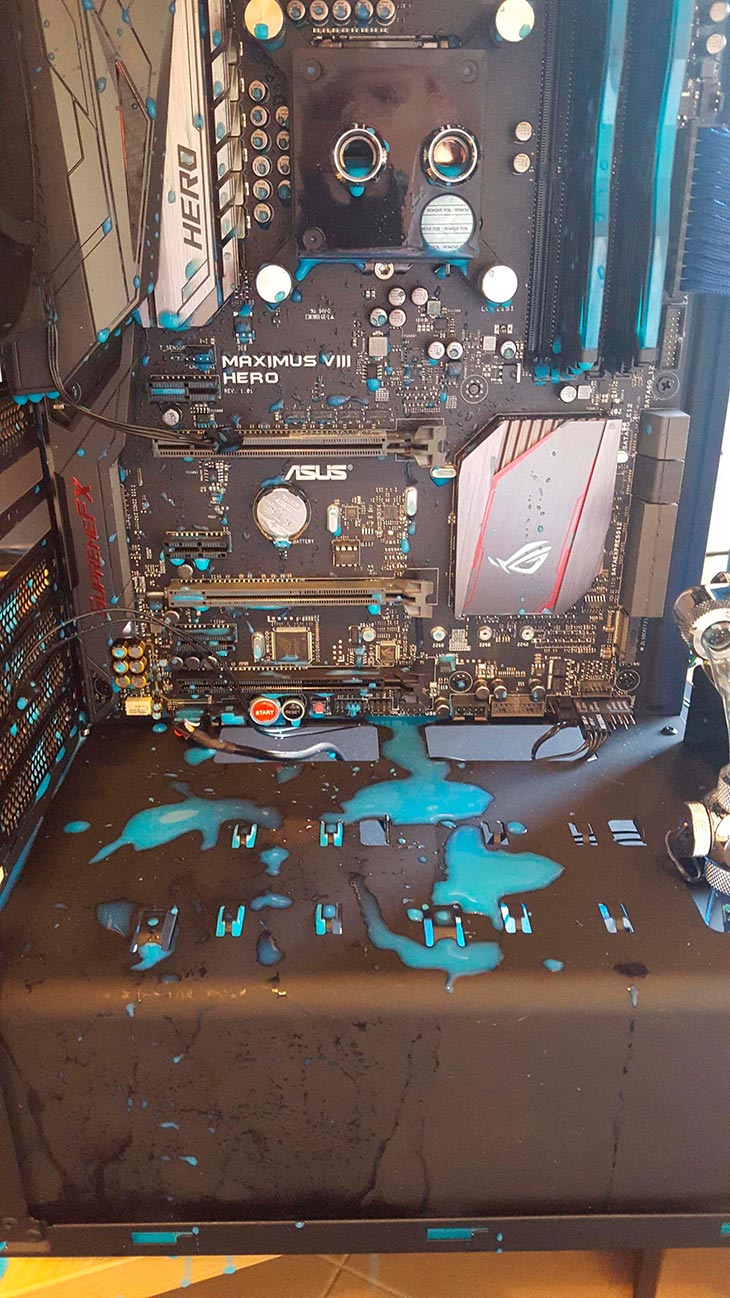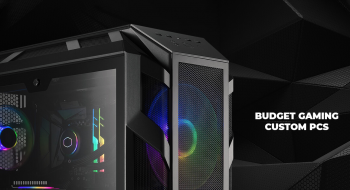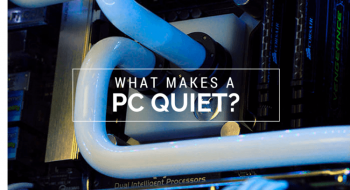Liquid cooling has obvious benefits for your Custom gaming PC or custom workstation PC. Compared to air-cooling, it is wholly superior. It is quieter, and it looks better. However, there are clear risks involved with introducing any moisture into an environment reliant on circuitry. A leaking liquid cooling mod can be catastrophic, so here is a short guide on how to react should you notice a leak in your loop.

Stay calm
Do not panic. If you see the leak, but your system is still active, there may still be time to save things. Power the system down and remove the power supply from the wall. You absolutely must stop the flow of electricity through the system to prevent a catastrophic failure.
Now that the power has been cut, it is time to get inside and start damage control. This entails using a microfiber towel or paper towels to collect as much liquid as possible. It is imperative that you leave no standing liquid behind. If it hasn’t soaked into the components by now, leaving it there will ensure that it has time to.
Deep Drying
Next, begin dismantling any part of your liquid cooled PC which has been contacted with water. Take this time to deeply dry the parts. Be cautious to not cause physical damage to the vulnerable circuits while drying. The motion of towels over them may be rough enough to damage some things, so be gentle.
For the next day, leave the parts sitting out on paper towels or sheets of cardboard to extract any moisture that has soaked inside. Keep in mind, some parts that have gotten wet may need as much as two days to dry out. Don’t be shy about allowing them to have extra time to dry.
Cross Your Fingers
Once you believe everything has adequately dried, you can begin to reassemble your PC. Assuming you caught things quickly enough, and you’ve been dealt a lucky hand, your system should power back on. If it does not, you can begin the process of troubleshooting to determine which component has gone bad.








No comments yet